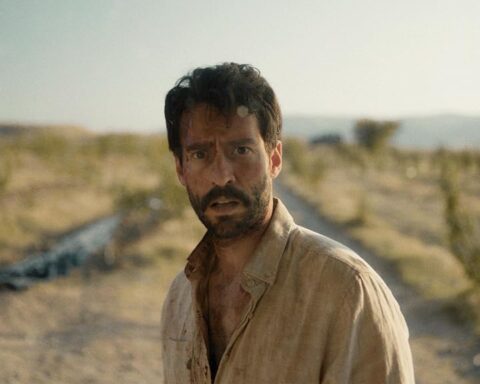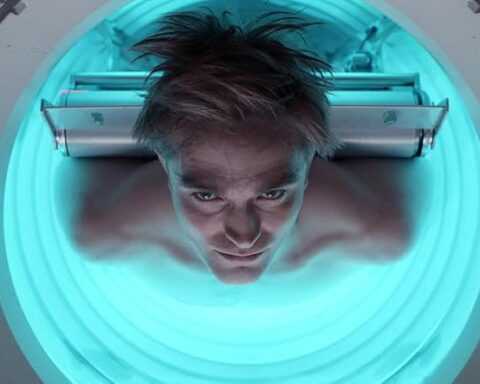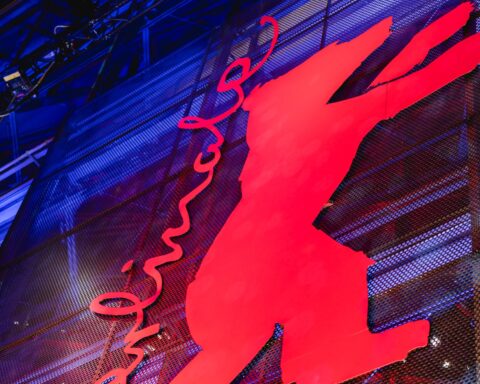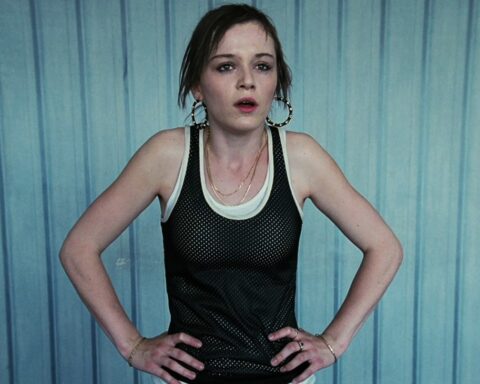Inside (2023)
After all, there is no creation without destruction.
Vasilis Katsoupis’s second feature film “Inside” tells the story of a famous collector’s struggle for survival trapped in his apartment by an art thief. Set in a single location and featuring almost a single actor, the film, while meeting expectations with Willem Dafoe’s performance, falls far short of satisfying its audience with its weak underlying narrative and unclear subtext.
Nemo, a renowned art thief, enters the high-tech and flashy apartment in the heart of New York belonging to a collector who is on a long business trip, intending to steal multimillion-dollar paintings. At the beginning of the film, Nemo’s priorities are clearly stated: his cat, an AC/DC album, and a sketchbook. This opening monologue, which emphasizes the importance of art to him, is significant for character development; throughout the film, a struggle for existence follows in the footsteps of the “sketchbook” and its ghosts.
Sometimes a piece of art is more special to an artist, art lover, or collector than others; when Nemo, who embarks on an “operation” to steal the works of the Austrian expressionist painter Egon Schiele, fails to find the target painting, things start to go awry. Every passing moment is crucial, and he takes unexpected risks in pursuit of the magic of the painting, ultimately finding himself trapped in the apartment after his partner disappears, leaving him in a modern-day Robinson Crusoe story.
One layer of the film concerns the psychological impact of human isolation; when Nemo realizes his predicament, his initial reaction is one of denial, similar to the stages of grief. Refusing to accept that he is trapped inside the house, Nemo attempts to escape in various ways, despite his shock. (A nice detail here is that a small figurine he admires in the house, initially just a piece of art, later becomes a tool that could help him break the door). Nemo’s choice to sleep curled up on the floor with a blanket instead of on a comfortable bed or sofa can also be explained by this denial stage. Later on, he finally accepts the truth and transitions into the anger stage, declaring war on the art objects in the house, from the refrigerator to various items, like a Don Quixote, using whatever is at hand. As he realizes the inevitability of his situation, he negotiates with the house, marking the beginning of starting life from scratch. He creatively transforms the potential functions of the objects around him into tools for survival. Despite various challenges, Nemo manages to create a minimal form of existence for himself, yet like a pigeon trapped on a small balcony, he feels his freedom has been taken away and is extremely unhappy, inevitably transitioning into a phase of depression.
With diminishing connection to reality, Nemo draws eerie figures on the walls, creates an interesting installation using household items and various art objects, and develops parasocial relationships with the people he sees on the security camera wandering around the building’s lobby. He listens attentively to the sound of a helicopter from outside; it’s not only a threat to him but also perhaps seen as a glimmer of hope for escape. He loses all sense of time. Caught between the struggle for survival and existential questioning, he finally steps into the infinite, climbing down from the Babel tower he constructed up to the glass ceiling of the living room, with the outcome ambiguously leading to eternity.
Trapped between the paradise of art and the confined house, Nemo, through a close-up shot showing a Blake book “The Marriage of Heaven and Hell,” may have made a connection.
The film begins with the words “Art is for keeps” and ends with the expression “After all, there’s no creation without destruction.” The film’s main layer of meaning is, frankly, laden with art inquiries that make it valuable. Katsoupis not only examines the values people attach to art but also frames the film with thoughts on the enduring value of art and the connection between creation and destruction. When the questioning of art turns into a question of existential life, its functionality remains a question mark; does this question have an added value in the context of the nature of art?
The film doesn’t delve deeply into these inquiries and ultimately doesn’t contain a central view that means much; instead, it presents a stance that is devoid of consistent psychological or artistic propositions and is left to its own devices in terms of what it wants to say. Nevertheless, what makes it intriguing (besides Dafoe’s acting) is the scenes sprinkled throughout the film that compare basic needs to the functionality of art. The later parts of the film go a step further: a museum director (Maurizio Cattelan, Unnamed, 1999) taped to the gallery wall seems to symbolize Nemo; other art objects and photographs haunt Nemo like ghosts. Art, functioning as the fantasy of the rich, may symbolize the collector’s subconscious, confined to a secret dark room accessible only through narrow corridors, with Adrian Paci’s video work “Centro di permanenza temporanea” (2007) serving as an example.
In a film that takes place almost entirely in a single location, we only transition to a different setting in a dream sequence. By turning the audience’s expectation of explaining Nemo’s connection to the collector in the dream upside down, it adds another layer of ambiguity (but not in a good way).
Shortly after Dafoe’s closing monologue (a continuation of his opening words), he mentions that his cat died shortly after, lent out his AC/DC album, and never got it back. However, the sketchbook and the art it symbolizes remain permanent, even if he is trapped in a collector’s house. So, what does the idea that “art is permanent” ultimately mean to the audience, is a bit vague. On the other hand, is this a survival tension or an existential story? Both, but not quite either. Still, it’s a very nice farewell; I must say, I couldn’t leave the room until “Pyramid Song” by Radiohead ended.
Short notes from the Q&A with director Vasilis Katsoupis:
The director, who couldn’t praise Willem Dafoe’s acting enough, added that 30% of the film was improvised by Dafoe. Although the director had already achieved what he wanted in the initial shots, he carried out the second takes just to be sure. Similarly, Dafoe, like the director, didn’t want to know anything about the character’s past. He thought this would add value to the story. Nevertheless, despite trying to create a character background all day, Dafoe ultimately refused to listen. During the filming of the flood scene, the power went out. By chance, a part of the neon-lit writing “All the moments after this moment” on the wall remained lit (after this moment). The director, who was very pleased with the meaning this coincidence added to the film, commented, “Cinema is magic.”
Watched it at: Berlinale (World Premiere)
by Nil Birinci







